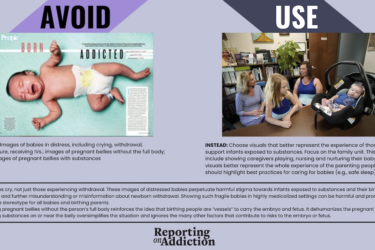
It seems pretty far-fetched that bringing a supermarket to a disadvantaged neighborhood could, in a matter of months, turn back the tide of obesity.
So I wasn’t exactly shocked by the study in Health Affairs (AHCJ members have free access) this week finding that the addition of a supermarket made little impact on nearby residents’ diet or weight gain. The authors compared two demographically similar Philadelphia neighborhoods. Both were considered food deserts, but one received a new 41,000-square-foot-supermarket in 2009. Six months later, the authors found no significant difference in body mass index or daily fruit and vegetable intake between residents of the two neighborhoods. (In the neighborhood with the new supermarket, most residents didn’t even adopt it as their main store.)
The link between food deserts and obesity has always been somewhat tenuous. For instance, having a nearby supermarket or grocery made no difference in the amount of fruits and vegetables people ate or the overall quality of their diets in one of the largest observational studies to date. More recently, researchers analyzed data from 97,678 adults in the California Health Interview Survey and found “no strong evidence that food outlets near homes are associated with dietary intake or BMI.” They figured it’s because most people go by car and don’t limit their shopping to nearby stores.
News outlets tended to cast the latest study as a policy fail for the Obama administration. Obama’s $400 million Healthy Food Financing Initiative is based on the idea that making fresh fruits and vegetables more accessible in underserved neighborhoods will help reverse diet-related health problems.
I’m not sure that a six-month pilot study on a single store is the final word. In a thorough report by Sarah Corapi at The News Hour, study author Steven Cummins says he remains convinced that better food stores are needed in many disadvantaged neighborhoods:
“I want to stress that supermarket interventions – even though I don’t think they’re necessarily effective in the way people think they’ll be effective – are very important, and I am actually quite supportive of them. Access at the basic level is something you need to have before you have anything else. But the key message I want to get across is that they’re just not successful on their own. We need them plus a range of other things that might make a difference to improve people’s diet. You’ve got to think about the culture around shopping and eating food, too.
There is a mountain of evidence showing that Americans living in low-income and minority areas tend to have poor access to healthy food. A recent review found 18 carefully done studies confirming that neighborhoods with a high proportion of low-income or African American residents are underserved by food retailers compared with more advantaged areas (and the U.S. seems to be the only wealthy nation where food deserts are common).
But a lack of nearby wholesome food is hardly the only factor promoting obesity and poor health in disadvantaged urban neighborhoods and rural areas.
We know, for instance, that the path to obesity typically starts early in life, with some biological effects established in the womb. And from birth on, newborns must contend with an environment that has become obesogenic in almost every way you can imagine.
Bottle-feeding and too little sleep, for instance, can prime the metabolism for weight gain. Growing up without physical activity has become commonplace, particularly among children at the lower end of income ladder, adding to the ranks of people who grow into adulthood never learning to enjoy exercise. Pre-schoolers are the targets of multimillion-dollar marketing campaigns for nutrient-poor, calorie-dense junk food. Government farm subsidies have boosted the output of such fare, pushing down the prices relative to healthier options. The high price of nutritious food can be more of a barrier than distance to a store if you don’t have much money to feed your family, in which case it’s tempting to buy cheap processed foods with added fat and sugar and a long shelf life that minimizes losses due to spoilage.
Reversing all of the obesogenic influences built into our way of life won’t be easy, and it will take years – not months.







